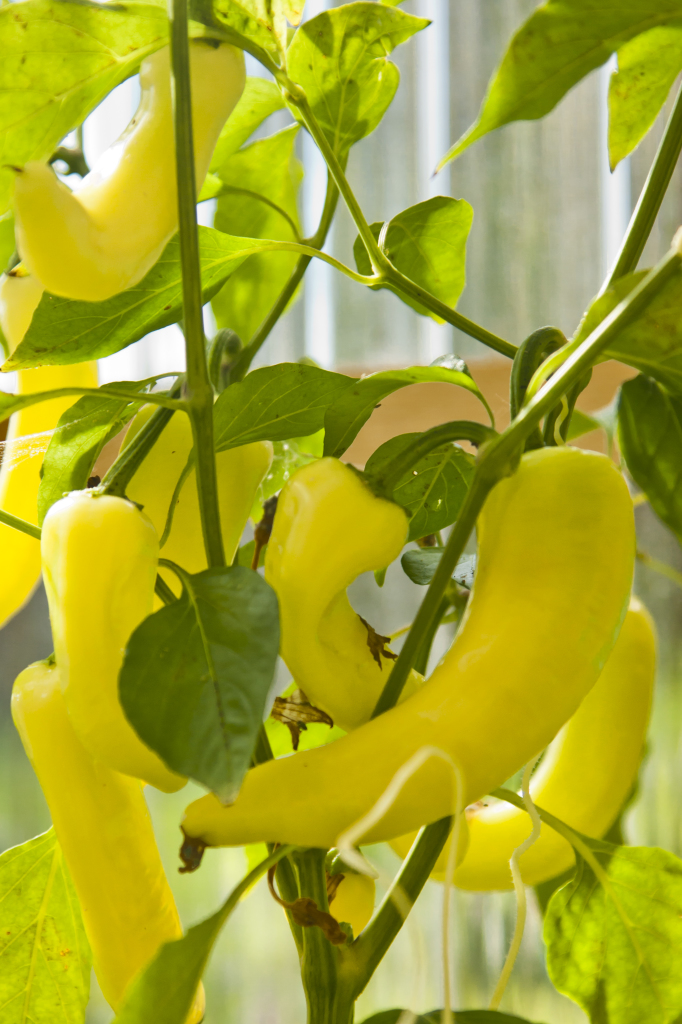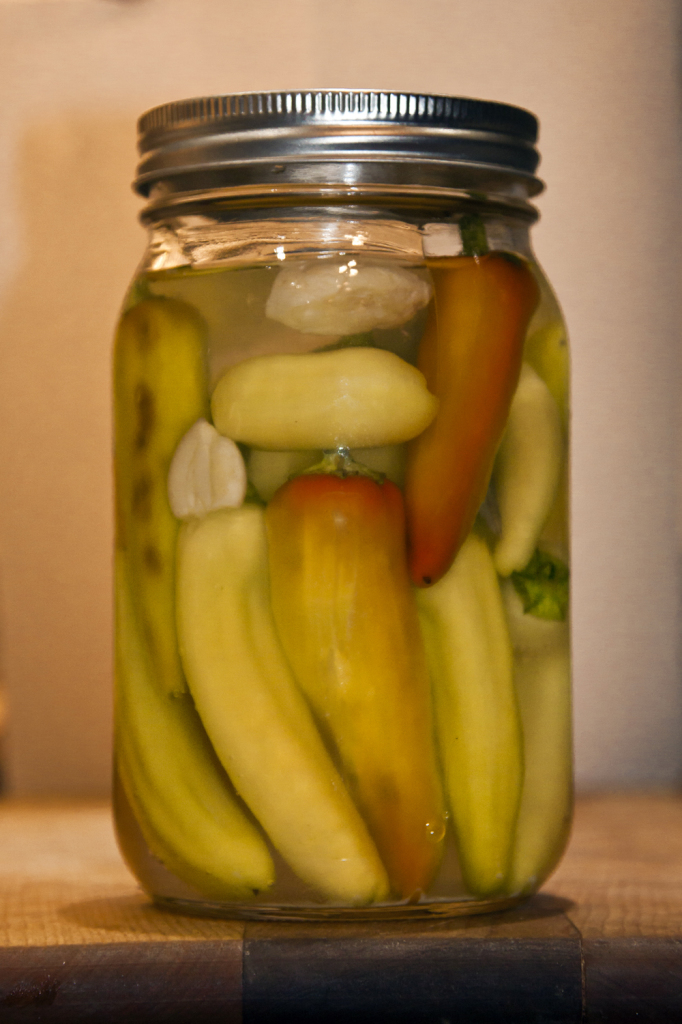 September rolls along and those greenhouse peppers I’ve been patiently watching are ready (here in Anchorage it doesn’t get hot enough for peppers, tomatoes, cucumbers… they need some heat help). Pickled peppers, peperoncinis, jalapenos, yellow wax peppers; abundantly ready. A beautiful assortment of both common and obscure peppers all ready before we get a serious temperature downturn.
September rolls along and those greenhouse peppers I’ve been patiently watching are ready (here in Anchorage it doesn’t get hot enough for peppers, tomatoes, cucumbers… they need some heat help). Pickled peppers, peperoncinis, jalapenos, yellow wax peppers; abundantly ready. A beautiful assortment of both common and obscure peppers all ready before we get a serious temperature downturn.
Personally, I love the peperoncinis, and smaller Anaheim’s lacto-fermented to heighten their flavor. I love pickled hot peppers but Greg and Alex love them more. All fall and winter we enjoy antipasto with cured olives, 100% grass-fed beef salami, and Seeds Gone Crackers for dinner, portable lunches and more.
Another recipe I love isn’t even mine: Raw and Fermented Tomatillo Salsa but only if I have enough left after putting up some pickled peppers.
Brine-pickled peppers
So often we shred or chop our veggies before we culture them. Personally, I like the charm and appearance of the whole pickled pepper when I serve them. It takes a little longer to preserve the peppers this way, but I have space on my counter…
Fermentation is the beautiful process whereby the beneficial, probiotic bacteria eat away the carbohydrates in a food, and transform them into the various acids that give cultured foods their distinctive tang. The more I work with clients, the more I see the benefits of including probiotic foods in their health journey. Just a little goes a long way. Besides, it’s fun to have options beyond yogurt.
Ingredients
4 cups whole small peppers
3 cups filtered water
2 Tablespoons of sea salt
2 cloves garlic, crushed and sliced
1 bay leaf
optional: 1-2 Tablespoons starter whey or brine from a previous batch
Preparation
1. Dissolve the salt in warm water. It can be warmed over low heat, but let it cool to room temperature before continuing.
2. Pack a quart-sized ball jar with whole peppers, if small, or strips if you want to try the larger peppers. Carefully stack the peppers in, taking care not to bruise them. Place the garlic cloves and bay leaf among the peperoncini.
3 Pour the cooled saltwater brine over the peppers, seal the jar, and allow the peppers to ferment for 10 days. Their color will fade and yellow.
4. After about 10 days, open the crock and try a pepper. If you life the flavor, put the jars in the refrigerator or cold storage. If you prefer a sourer flavor, continue fermenting the peppers until they acquire the flavor you like, I test every 3 to 5 days.
If properly fermented, these peppers will last a year sealed.
Variations
Share any other spices or flavors you like adding in the comments below.
© 2014 Marie Sternquist Cecchini. All Rights Reserved








